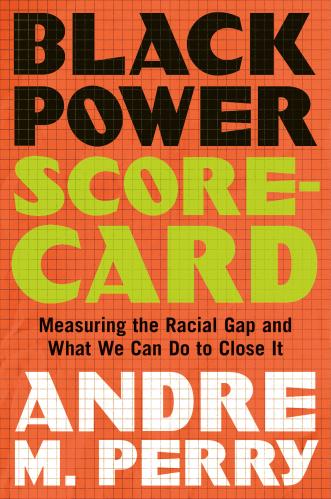In testimony before the House Subcommittee on Immigration, Citizenship, Refugees, Border Security, and International Law, Russell Wheeler delivered the following prepared remarks on immigration courts.
Chairwoman Lofgren, Ranking Member King, and members of the Subcommittee: Thank you for this opportunity to testify at these oversight hearings on the operation of the Executive Office for Immigration Review and its components.
Since 2005, I have been the president of the Governance Institute—a small, non-partisan organization that since 1986 has analyzed various aspects of interbranch relations, with special attention to the judicial branch and the administrative state—and a Visiting Fellow in the Brookings Institution’s Governance Studies Program. Before assuming these positions I was for 28 years with the Federal Judicial Center, the federal courts’ agency for research and education, serving since 1991 as its Deputy Director.
My focus today will be on the immigration courts, because it is there that the litigation journey ends for the great majority of those in removal proceedings.[i] My interest in immigration courts is relatively recent. While I do not bring years of study of or experience in them, I have spent a good deal of time working with federal and state courts, and observing their operations and efforts to improve their operations.
Evaluating immigration court performance implicates three questions:
- Are they adequately resourced? No, but appropriations at the level needed are unlikely, especially in these difficult economic times.
- Should they be housed in the Department of Justice? Probably not, but the prospects for major structural change are quite unlikely.
- Given these two answers, are there other ways to enhance immigration court performance? Probably, and the bulk of my testimony will expand on this answer.
There is general agreement that the immigration courts need substantially more resources in order to do their inherently difficult job. Current resources provide too few immigration judges (IJs) and thus impose case processing demands on them that greatly exceed demands on other adjudicators whose decisions can have momentous impact. IJs in 2009 averaged 1,251 completed proceedings per judge, with considerable variation among the courts—from 506 per judge in one court to 3,504 in another.[ii] By contrast, federal district judges in 2009 terminated on average 528 civil cases and criminal defendants per judgeship, [iii] and few argue that federal district judges are underworked. IJs have an especially difficult job because of their working conditions, the kind of evidence before them, and because their decisions, some literally involving life or death, are largely dichotomous—removal or not rather than, for example, the range of criminal sentences a judge could impose—and their decisions are final, as opposed, for example, to state criminal sentences that a parole board can reconsider.[iv]
There is less agreement about structural change. The National Association of Immigration Law Judges,[v] the American Bar Association Commission on Immigration,[vi] to name two, have recommended some type of free standing agency or so-called Article I court, inside the executive branch but outside the Department of Justice, to do the work currently assigned to the immigration courts and the Board of Immigration Appeals.
I do not dwell on structural change because it is not the subject of these hearings and, as a practical matter, is quite unlikely to be enacted for the foreseeable future. It is not impractical, however, to identify the goals that such an independent agency might serve and whether it is possible to promote some of these goals under the current structure. The key goals are impartial and effective case management and decision-making, on the one hand, and accountability for the effective use of resources. Those values are important in any adjudicatory system but especially in one whose decisions are of such great consequence to aliens ordered removed and their families, and, just as important, to citizens who want immigration laws enforced. The immigration courts should provide litigants and interested publics assurance that executive branch removal orders are consistent with the criteria Congress has provided.
Of course, few argue that IJs’ case management and decision making should not be impartial. The Department, although referring to IJs as the delegates of the attorney general, nevertheless tells them to “exercise their independent judgment and discretion” and to “take any action consistent with their authorities under the Act and the regulations as is appropriate and necessary for the disposition of the case.”[vii]
The current arrangement, however, defuses accountability, because IJs are ultimately accountable to the Justice Department, which is in turn accountable to Congress for how they do their jobs. There is, moreover, an inevitable conflict when the Department, with its wide-ranging portfolio and its inherent and necessary prosecutorial orientation—even if it does not prosecute in the immigration courts—is expected to administer a judicial system with as delicate and vital a mission as that of those courts. Judge Marks can testify better than I about problems created by those conflicting missions. In some ways, the situation seems analogous to the Justice Department’s 69-year administration of the federal district and circuit courts. That situation prevailed from the department’s creation in 1870 until 1939, when Congress created the Administrative Office of the U.S. Courts and told it to function under the supervision of what is now the Judicial Conference of the United States. One impetus for change were complaints that the chief prosecutorial agency should not be administering the courts in which it brought its prosecutions. Moreover, though, as Peter Graham Fish put it, “[a]t the root of many executive-judiciary stresses was the relatively insignificant place of the courts in the department’s total administrative realm, and the nature of the court system’s problems.”[viii] Attorney General Homer Cummings expressed the consensus that emerged within the courts and the Justice Department. “Let the judges run the judiciary,” he told a legislative committee in 1938. “That is the burden of my song.”[ix] When Congress did let the judges run the judiciary, the judges became accountable to Congress for the responsible exercise of their duties and effective use of the resources provided them.
A different approach to improving the immigration courts
Given barriers to major structural change, perhaps the best hope for improving immigration court adjudication lies in Justice Department reassessment of some aspects of immigration court management. While whatever changes the department implements may last only until the next attorney general takes over, trying new approaches is better than trying nothing. And new approaches to immigration court management would also benefit any independent adjudication agency that Congress might establish.
A. Using third branch analytic methods and findings to assess and improve executive branch courts
As developed below, I suggest that the Justice Department and the immigration courts look to successful efforts to improve the performance of third branch courts—defining “performance” broadly to include not only expeditious case disposition, but also judges’ being attentive to the needs of court users and operating with transparency and accountability. Immigration courts—for all the ink devoted to them in recent years—have been subjected to rather narrow analyses of how they function as courts and little effort to learn how lessons gleaned about the ingredients for effective courts might be applied to immigration courts. The foray I describe here to use some third branch approaches to enhance the performance of immigration courts is tentative, limited, and exploratory, and I welcome comments and challenges to it. I realize too that the current caseload per IJ may make a pipedream of the analyses suggested by this approach, including application of the diagnostics necessary to implement them.
“Immigration Court,” one immigration scholar has observed, “basically looks, feels, and operates like most other courts [even though] some of its characteristics strike even experienced litigators as foreign.”[x] Beyond their look and feel, though, are other factors that make immigration courts less like many executive branch courts and more like large state court systems or the U.S. bankruptcy courts. First, the over 200 judges in over 50 immigration courts operate throughout the country, while most executive branch courts are based in the Washington, D.C. area. Second, the immigration court system is much larger than almost all executive branch adjudication agencies that employ Administrative Law Judges. Most of those agencies employ from one to 19 such judges (with the Social Security Administration the obvious exception).[xi] And (again with a few exceptions[xii]) the caseloads of other executive branch adjudication agencies appear to be small although often complex. (It is harder to get a handle on the number and configuration of non-APA judges—other than immigration judges—although a 2002 canvass identified 3,370.)[xiii]
B. Standards for Assessing Courts
Developing standards by which to assess courts has been one of the most pervasive types of efforts to improve their performance. I refer, first, to judicial administration standards, second to performance standards, and third to cultural standards (or types). I describe these three sets of standards briefly below. Various lessons from them might well be applied to immigration courts. In this statement, I discuss two: strong leadership by local trial court chief judges and comprehensive performance measures.
1. Judicial administration standards It seems likely that how courts are organized—e.g., who has management responsibility—may have some influence on their ability to deliver justice effectively, expeditiously, and economically. On that belief, the American Bar Association developed “minimum standards of judicial administration” in 1938 and approved revisions of them in 1974[xiv] and 1990.[xv] It added standards for trial courts in 1992.[xvi] The standards, developed by committees of state judges and court administrators, embrace the “unified court” approach, in which all courts in a state are under the administrative and rule-making authority of the highest state court and its chief justice. The highest court of the state may be roughly analogous to the Chief Immigration Judge within the Executive Office for Immigration Review (or perhaps the Board of Immigration Appeals in its capacity as, in effect, the system’s appellate court). The revised standards recognize as well the need for strong and collegial local leadership by trial court chief judges. The ABA has promulgated additional organizational standards in various relevant areas, which some have recommended be applied to IJs’ selection[xvii] and performance reviews. [xviii]
2. Court performance standards In 1990, the National Center for State Courts published its Trial Court Performance Standards. [xix] These performance standards reflect the view that even though the judicial administration standards state a well-informed conventional wisdom about how to organize and manage courts, in the final analysis, what is important is how courts perform. The standards, grouped in five “performance areas,” are aspirational statements of how those who run and use the court, and taxpayers, expect courts to perform. Some examples:
|
Performance Area |
Sample standard |
| 1. Access to Justice | 1.4 Courtesy, Responsiveness, and Respect—Judges and other trial court personnel are courteous and responsive to the public, and accord respect to all with whom they come into contact. |
| 2. Expedition and Timeliness | 2.1 Case Processing—The trial court establishes and complies with recognized guidelines for timely case processing while, at the same time, keeping current with its incoming caseload. |
| 3. Equality, Fairness, and Integrity | 3.4 Clarity—The trial court renders decisions that unambiguously address the issues presented to it and clearly indicate how compliance will be achieved. |
| 4. Independence and Accountability | 4.2 Responses to Change—The trial court responsibly seeks, uses, and accounts for its public resources. |
| 5. Public Trust and Confidence (noting that courts have several constituencies) * | 5.3 Judicial Independence and Accountability—The public perceives the trial court as independent, not unduly influenced by other components of government, and accountable. |
* They include “the vast majority of citizens and taxpayers who seldom experience the courts directly; “opinion leaders;” “citizens [sic] who appear before the court;” and judges, court staff, and lawyers “who may have an ‘inside’ perspective on how well the court is performing.”
The standards were released with an intimidating set of instruments for measuring performance. The National Center published in 2005 a simplified set of “CourTools” [xx]—ten ”core measures” that judges and administers can use to monitor their courts’ performance. Eight measures are applicable to immigration courts: “Access and Fairness,” “Clearance Rates,” “Time to Disposition,” “Age of Active Pending Caseload,” “Trial Date Certainty,” “Reliability and Integrity of Case Files,” “Court Employee Satisfaction,” and “Cost per Case.”
3. Court Cultures Performance standards help judges and court managers identify how courts should perform, and how to measure whether they are performing as they should, but they offer little guidance in how to manage courts to achieve high performance. That realization led to the third effort to improve state courts—analysis of their organizational cultures and a search for links between culture and performance, and how to change current cultures to those associated with high performance.
The 2007 path breaking work in this area, Trial Courts as Organizations,[xxi] adapted analytical tools for assessing corporate culture and put them to use in 12 criminal felony trial courts in three states. Ostrom et al said “[a] court’s management culture is reflected in what is valued, the norms and expectations, the leadership style, the communication patterns, the procedures and routines, and the definition of success that makes the court unique. More simply: ‘the way things get done around here.’”[xxii]
Ostrom and his colleagues identified four court “cultural archetypes” [xxiii]—communal (prizing collegial decision-making), networked (emphasizing creativity and innovation), autonomous (eschewing administrative controls), and hierarchical (where “the chain of command is clear,”)—emphasizing that “court culture is a matter of emphasis and degree rather than perfect alignment.”[xxiv]
They assessed the “performance consequences”[xxv] of the trial court’s primary culture in several Trial Court Performance Standards areas. In terms of time to disposition, they expected and found that hierarchical courts are more likely than others to meet the ABA’s 1987 Time Standards for criminal felony clearance rates.[xxvi] When they asked trial judges and administrators which cultures they preferred—i.e., how they might want their courts to do business differently—they expected and found, as to managing cases and dealing with change, that judges and administrators generally preferred the aspects of hierarchical culture—doing business “on the basis of clear and orderly rules, expertise, and modern management techniques.”[xxvii] As to judge-staff relations and internal organizations, they found a preference for networked cultures, in which business is done “on the basis of inclusiveness … [b]ecause judges and court administrators have ongoing relationships and must consult each other to discuss ways to implement policies, allocate resources, and configure court staff” and avoid :personnel conflicts.”[xxviii] For court leadership, they found that judges and administrators favored a communal culture—doing court business on a “collegial basis, where trust and mutual respect reign automatically.”[xxix] Finally, they found little interest in an autonomous court culture.
B. Applying Standards, Assessing Cultures, in Immigration Courts
From Trial courts as Organizations and similar assessments emerge several observations about the trial court culture-performance link that may have applicability to immigration courts. I hope to develop a broader framework for analysis and a research method to determine whether lessons learned about the organization and performance of third branch courts might be used beneficially in and by immigration courts. Below, I identify, as examples, two essential needs that emerge from the analysis of third branch courts—strong local leadership and comprehensive performance measurement. The International Framework for Court Excellence, developed by a consortium including members of the National Center for State Courts, several international and foreign court organizations, and the Federal Judicial Center, seeks to promote high performance in seven performance areas: court management and leadership; court policies; human, material and financial resources; court proceedings; client needs and satisfaction; affordable and accessible court services; and public trust and confidence.[xxx] The consortium’s basic conclusion: “To become an excellent court, proactive management and leadership are required at all levels, not only at the top, and performance targets have to be determined and attained. Well-informed decision-making [about achieving high performance] requires sound measurement of key performance areas and reliable data.”[xxxi]
1. Trial court chief judges One element of high-performance trial courts is the role of the chief trial court judge in enhancing the court’s performance by establishing policies through collegial decision-making, monitoring performance, building and sustaining morale, and searching for alternative ways of doing things.
In all federal district and bankruptcy courts and all but one state general jurisdiction trial court, one of the judges serves as the chief judge. Selection methods and terms vary. Chief federal district judges take office through a statutory formula that combines age and seniority; they may serve for up to seven years.[xxxii] Chief bankruptcy judges are appointed by the respective district court.[xxxiii] The dominant selection method for state trial court chief judges is election by peers, followed closely by appointment by the state chief justice. In over half the states, the term is from one to three years, usually renewable.[xxxiv]
Rather than this chief-judge-in-every-trial-court arrangement, the immigration courts currently have eight Assistant Chief Immigration Judges (ACIJs) who are each responsible for from four to eleven immigration courts, usually on a rough geographic basis. One has responsibility, for example, for the three courts in or near New York City and the court in Ulster. Another has responsibility for nine courts in Arizona, California, Nevada, and Maryland. Six of the ACIJs are resident in one of the several courts under their purview, but that leaves 38 of the 45 multi-judge courts without a chief judge as a member of the court.[xxxv] The jobs of these ACIJs must be highly taxing, and the ABA’s 2010 report recommends a significant increase in their numbers[xxxvi]
Instead of more ACIJs, though, the Department, the EOIR, and the immigration courts might consider the conventional third branch approach of a chief judge for every multi-judge court, or at least for immigration courts of three or more judges. As of May 2010, 30 of the 52 courts for which EOIR showed at least one assigned judge had three or more judges, and those courts accounted for 76 % of the receipts in 2009.[xxxvii]
As much as their small numbers and geographic remoteness may limit the ACIJs’ effectiveness (and I have no knowledge of their effectiveness), there may also be limitations within what appears to be the job description. On the EOIR website, immediately below the link to the ACIJs and their areas of responsibility, are links to directions for filing complaints about immigration judge conduct.[xxxviii] Similarly, the ABA Commission report discusses the need for more ACIJs in a section headed “Inadequate Supervision and Discipline,” [xxxix] and a recent TRAC report on implementation of the attorney general’s 2006 changes reflects the same orientation.[xl] The emphasis on ACIJs as supervisors and discipliners no doubt reflects concern over some IJs’ well-publicized abusive and intemperate behavior.
But dealing with “bad apples” is not the only thing that chief judges in well-performing trial courts do. ABA judicial administration standards and Trial Courts as Organizations emphasize, not supervising a group of bureaucrats, but rather leading a group of professionals. The ABA standards recognize the state chief justice as the central authority of the court system but say that each trial court should have its own administration “so that it can manage its business.”[xli] In this scheme, the chief judge of each court assumes a key role, not only as “the locus of responsibility for internal management, coordination between units, and conduct of external relations,”[xlii] but also to “[s]et an example in performance of judicial and administrative functions,” emphasizing the importance of “tact, the ability to listen, attention to the interests of others, and persuasiveness.”[xliii]
Likewise, Ostrom and his colleagues see the job as “fostering agreement among members and staff of the court in a collegial manner” and “encourag[ing] other judges and staff to embrace one set of cultural orientations in case management style and change management and another set in judge-staff relations and internal organization. Clearly this role calls for the [chief] judge to be deft in building agreement and not asserting authority unilaterally or collaborating with a particular coalition on the court.”[xliv] These are not novel observations. Flanders’s 1977 study of federal district courts attributed the characteristics observed in high performing courts largely to their chief judges’ “exceptional personal skills,” and the ability to forge compromises, deal effectively with procedural issues, and work hard.[xlv]
I have no evidence whether the current ACIJs do or do not function in a similar manner in some or all of the courts under their purview. At least one immigration judge (in the New York court), writing specifically about the problem of unrepresented aliens, praises her ACIJ for encouraging the judges of the court to seek ways to improve legal representation of aliens, pro bono and otherwise.[xlvi] But it is unlikely that the current arrangement fosters—or, given the numbers—even permits the kind of chief judge stewardship envisioned for third branch courts.
2. Performance measures Another important principle for high-performance trial courts is measuring performance, which has been highly controversial within the immigration courts. The ABA Commission[xlvii] rightly ask whether current performance evaluations of IJs overmeasure productivity to the exclusion of other judicial virtues, and the National Association of Immigration Judges refers to “a well-recognized and long-established principle that administrative law judges must be exempt from the provisions of agency administered performance evaluations . . . precisely to ensure their independence in decision-making.”[xlviii] But any skewed emphasis in the EOIR instruments and in their administration by executive branch supervisors are not indictments of judicial performance evaluations but rather of their implementation within the EOIR, as the ABA Commission and National Association recognize.
“Excellent courts,” says the International Consortium, “systematically measure the quality as well as the efficiency and effectiveness of the services they deliver,”[xlix] and those services extend well beyond disposing of cases quickly. They include, for example, the first of the CourTools “core measures,” viz., “Access and Fairness.” Ostrom et al as well emphasize systematic rather than casual and anecdotal measurement and follow up by the chief judge when other judges fail to comply with agreed upon reporting protocols.[l]
Performance measurement can be both court-based (e.g., CourTools) and individual judge-based (typically, “judicial performance evaluation” or JPE) and can serve various purposes. CourTools serve internal management goals, but in the interests of transparency, some courts and entire state court systems have placed the resulting scores on their public websites,[li] partly in response to a 2005 Conference of State Court Administrators call for state courts to implement performance measures.[lii]
Individual judicial performance evaluation, which first appeared in the 1970s[liii] and were the subject of 1985 ABA standards,[liv] are in use, typically by statute or court rule, in at least 19 states, the District of Columbia, and Puerto Rico. Evaluations serve various purposes: for assessing judicial education needs; to provide judges objective information about their strong and weak points; and, in some states, to assist voters or others who decide whether to retain judges in office. Performance evaluation supporters insist that judicial discipline is not a purpose of judicial performance evaluation and warn against disseminating information developed about a judge to judicial discipline bodies.[lv] As tracked by the University of Denver’s Institute for the Advancement of the American Legal System (on whose advisory board I serve), independent commissions use surveys and interviews of those who interact with the judge, case management data, and the judge’s work product to evaluate judges on a regular schedule as to the performance areas of legal knowledge, integrity and impartiality, communication skills, judicial temperament, and administrative skills. [lvi]
3. Importing Third Branch Court Tools into Immigration Courts It will no doubt be challenging for the Justice Department to bring to immigration courts the staples of well performing third branch courts, such as chief judges in each multi-judge court and well-executed court and individual judge performance measures (and of course other aspects of well-performing courts that have gotten more attention than the two I discuss in this testimony, such as judicial selection and education[lvii] and litigant representation[lviii]). The key considerations, though, are heavy involvement by the judges themselves, and by independent knowledgeable observers, while maintaining management oversight that provides accountability to Congress. And although the stunningly high per judge caseloads may make impractical any effort to right the ship as opposed to simply constantly bailing it out, there may be room for trying new approaches.
Thank you for the opportunity to testify this morning. I will do my best to answer any questions you may have.
[i] See Executive Office for Immigration Review, U.S. Dep’t of Justice, FY 2009 Statistical Yearbook, at Y-1 2010 [hereinafter Yearbook] available at http://www.justice.gov/eoir/statspub/fy09syb.pdf
[ii] These calculations are based on the 232 judges listed on the EOIR website under “Immigration Courts Nationwide” as of May 2010 available at http://www.justice.gov/eoir/sibpages/ICadr.htm and completions data reported in Yearbook supra note 1 at B-4.
[iii] Based on Tables C-4 and D-4 in Administrative Office of the U.S. Courts, 2009 Annual Report of the Director: Judicial Business of the United States Courts (2010)
[iv] Baum, “Judicial Specialization and the Adjudication of Immigration Cases,” 59 Duke L.J. 1501, 1511 (2010).
[v] Marks, “An Urgent Priority: Why Congress Should Establish an Article I Immigration Court,” 13 Bender’s Immig. Bull. 3, 10 (2008)
[vi] ABA Commission on Immigration, Reforming the Immigration System, Proposals to Promote the Independence, Fairness, Efficiency, and Professionalism in the Adjudication of Removal Cases [hereinafter ABA Report (prepared by the Arnold and Porter law firm) at Part 6 (2010)
[vii] 8 C.F.R. §§ 1301.1 (a) (1) and (d)(ii).
[viii] P. Fish, The Politics of Federal Judicial Administration 101 (1973).
[ix] Hearings before the Committee on the Judiciary, United States Senate, on S. 3212, A Bill to Establish the Administrative Office of the United States Courts, and for other Purposes, 75th Cong., 3d Sess. at 31 (1938).
[x] Caplow, “Renorning Immigration Court,” 13 Nexus J. Op. 85 (2007-08) (“Renorming” in the sense of using different norms than used traditionally to assess immigration)
[xi] “The Federal Administrative Law Judges Conference” at http://005754d.netsolhost.com/faljcl.html (viewed June 14, 2010).
[xii] Veterans Law judges averaged 729 cases per judge; Social Security Administration Administrative Law Judges averaged 544 cases per judge. ABA Report, supra note 6 at 2-37.
[xiii] M. Asimov, “The Spreading Umbrella: Extending the APA’s Adjudication Provisions to all Evidentiary Hearings Required by Statute,” 56 Admin. L. Rev..1003, 1008 (2004)
[xiv] American Bar Association Commission on Standards of Judicial Administration, Standards Relating to Court Organization (1974).
[xv] American Bar Association Judicial Administration Division, I Standards of Judicial Administration, Standards Relating to Court Organization [hereinafter 1990 Court Organization Standards] (1990).
[xvi] American Bar Association, Judicial Administration Division, II Standards of Judicial Administration, Standards Relating to Trial Courts [hereinafter 1992 Trial Court Standards](1992)
[xvii] Caplow, supra note 10 text at note 54 and note 54
[xviii] ABA Report, supra note 6 at 2-33.
[xix] Available at http://www.ncsconline.org/D_Research/TCPS/Contents.htm
[xx] Available on the National Center for State Courts website at http://www.ncsconline.org/D_Research/CourTools/tcmp_courttools.htm
[xxi] Brian Ostrom, Charles W. Ostrom, Roger Hanson, and Matthew Kleiman, Trial Courts as Organizations (2007) [hereinafter Ostrom].
[xxii] Id at 4-5
[xxiii] Id at 69, 74ff, 79ff, and 84ff
[xxiv] Id at 42
[xxv] Id at 91
[xxvi]Id at 94
[xxvii] Id at 112
[xxviii] Id at 112-13
[xxix] Id at 113
[xxx] International Consortium for Court Excellence, International Framework for Court Excellence at http://www.courtexcellence.com/pdf/IFCE-Framework-v12.pdf
[xxxi] Id at 11
[xxxii] 28 U.S.C. § 136
[xxxiii] 28 U.S.C. §154
[xxxiv] Based on state-by-state information presented by the American Judicature Society at “Methods of Judicial Selection” at http://www.judicialselection.us/judicial_selection/methods/selection_of_judges.cfm?state= (viewed June 14, 2010).
[xxxv] Drawn from “Immigration Courts Nationwide,” supra note 2.
[xxxvi] ABA Report supra note 6 at 2-21.
[xxxvii] Drawn from “Immigration Courts Nationwide,” supra note 2 and Yearbook supra note 1 at B-4
[xxxviii] “Immigration Courts Nationwide,” supra note 2
[xxxix] ABA Report, supra note 6 at 2-21.
[xl] Transactional Records Access Clearinghouse, Immigration Courts: Still a Troubled Institution “9) Pilot Program to Deploy Supervisors to Regional Offices” (2009) available at http://trac.syr.edu/immigration/reports/210/.
[xli] 1990 Court Organization Standards supra note 15 at 29.
[xlii] Id at 17
[xliii] 1992 Trial Court Standards supra note 16 at 44-45
[xliv] Ostrom supra note 21 at 127
[xlv] Flanders, Case Management and Court Management in United States District Court 78 (Federal Judicial Center, 1977)
[xlvi] Noel Brennan, “A View from the Immigration Bench,” 78 Fordham L. Rev. 623, 627 (2009). Judge Brennan is an immigration judge at the main immigration court in New York City.
[xlvii] ABA Report, supra note 6 at 2-21
[xlviii] Marks, surpra note 5 at 14
[xlix] International Consortium for Court Excellence, supra note 30
[l] Ostrom supra note 21 at 145
[li] See the site links for “State/County Specific” at the National Center for State Courts’ “Performance Measurement Resource Guide at http://www.ncsconline.org/WC/CourTopics/ResourceGuide.asp?topic=CtPerS#639, and, for example, the “Utah Court Performance Measures” at http://www.utcourts.gov/courtools/
[lii] R. Schauffler, “Judicial Accountability in the US state courts, Measuring Court Performance,” 3 Utrecht L. Rev. 112, 1219 (2007) at www.utrechlawrev.org
[liii] R. Kourlis and J. Singer, “A Performance Evaluation Program for the Federal Judiciary,” 86 Denver U. L. Rev. 7, 10 (2008)
[liv] American Bar Association Special Committee on Evaluation of Judicial Performance, Guidelines for the Evaluation of Judicial Performance (1985), reaffirmed in 2005 and available at http://www.abanet.org/jd/lawyersconf/pdf/jpec_final.pdf (as cited in Kourlis and Singer, supra note 51 at n. 14
[lv] ABA Special Committee supra note 54, Guideline 2.3
[lvi] Kourlis and Singer, supra note 53
[lvii] See, e.g., ABA Report supra note 6 at 2-18ff.
[lviii] See, e.g., R. Katzmann, “The Marden Lecture, The Legal Profession and the Unmet Needs of the Immigrant Poor,” 3 Geo. J. Legal Ethics 3 (2008) and Katzmann, “Deepening the Legal Profession’s Pro Bono Commitment to the Immigrant Poor,” 78 Fordham L.Rev. 453 and, in the same number of the Review, the reports of three task forces that Judge Katzmann has assembled to enhance pro bono representation of aliens in immigration adjudication in New York City. Other pro bono representation projects are active in, for example, Houston (see South Texas Pro Bono Asylum Representation Project (ProBAR) at http://www.abanet.org/publicserv/immigration/probar.shtml; Immigration Justice Project of San Diego at http://new.abanet.org/Immigration/Pages/ImmigrationJusticeProject.aspx; and Florida (“Legal Representation Critical for Children in Immigration Removal Proceedings”, ABA Now at http://www.abanow.org/2010/02/legal-representation-critical-for-children-in-immigration-removal-proceedings/).
The Brookings Institution is committed to quality, independence, and impact.
We are supported by a diverse array of funders. In line with our values and policies, each Brookings publication represents the sole views of its author(s).









Commentary
TestimonyThe Executive Office for Immigration Review: Improving Immigration Courts
June 17, 2010